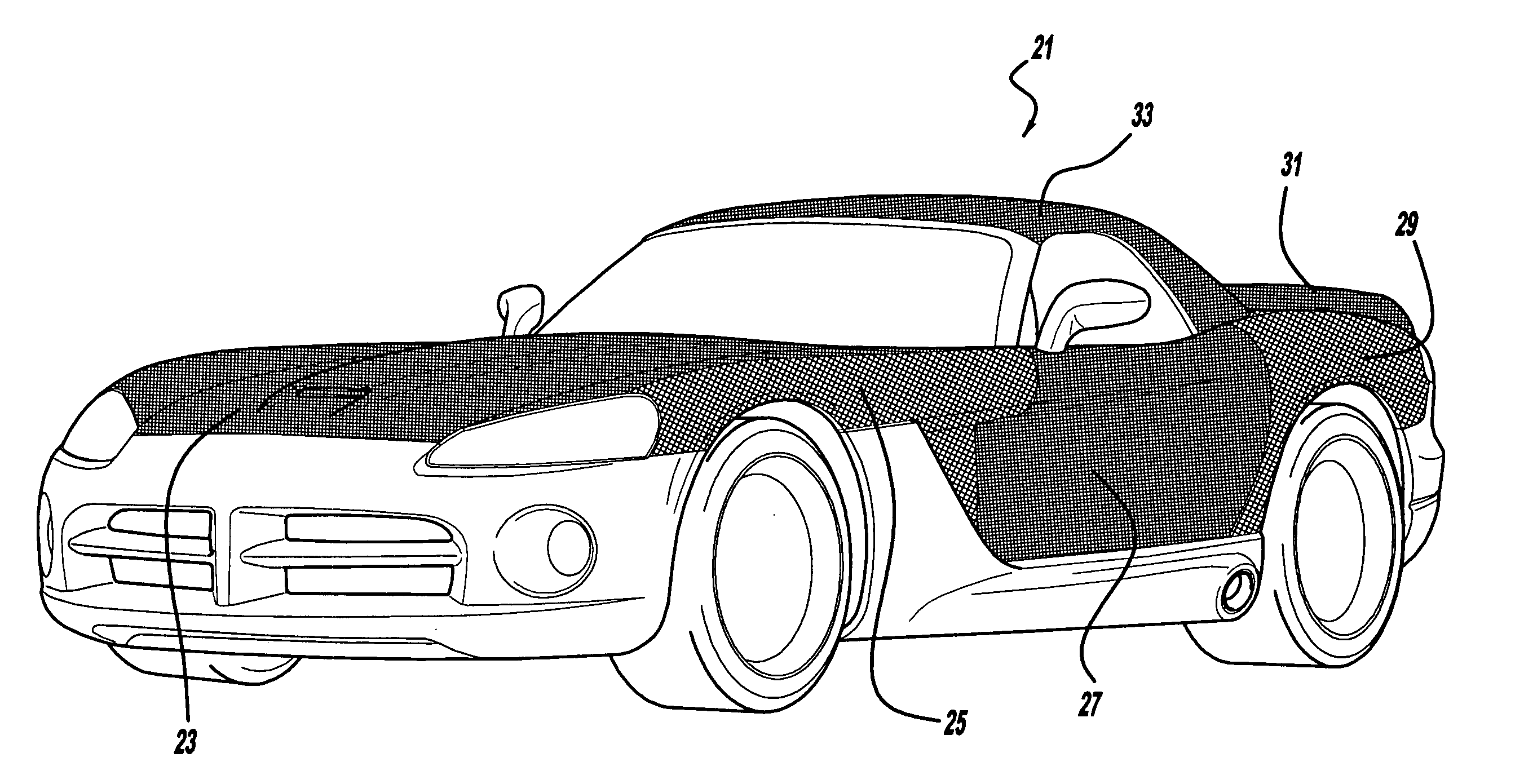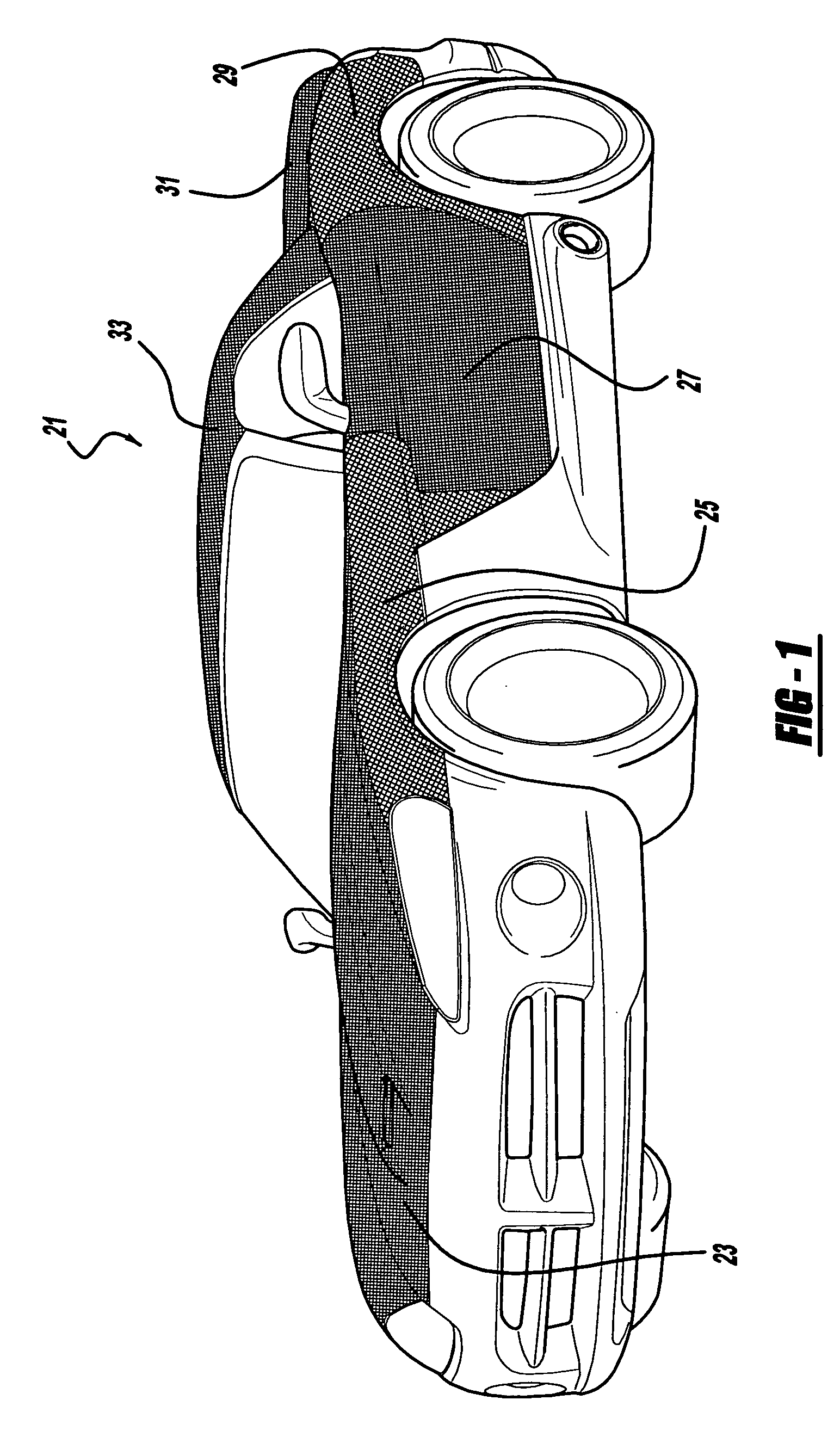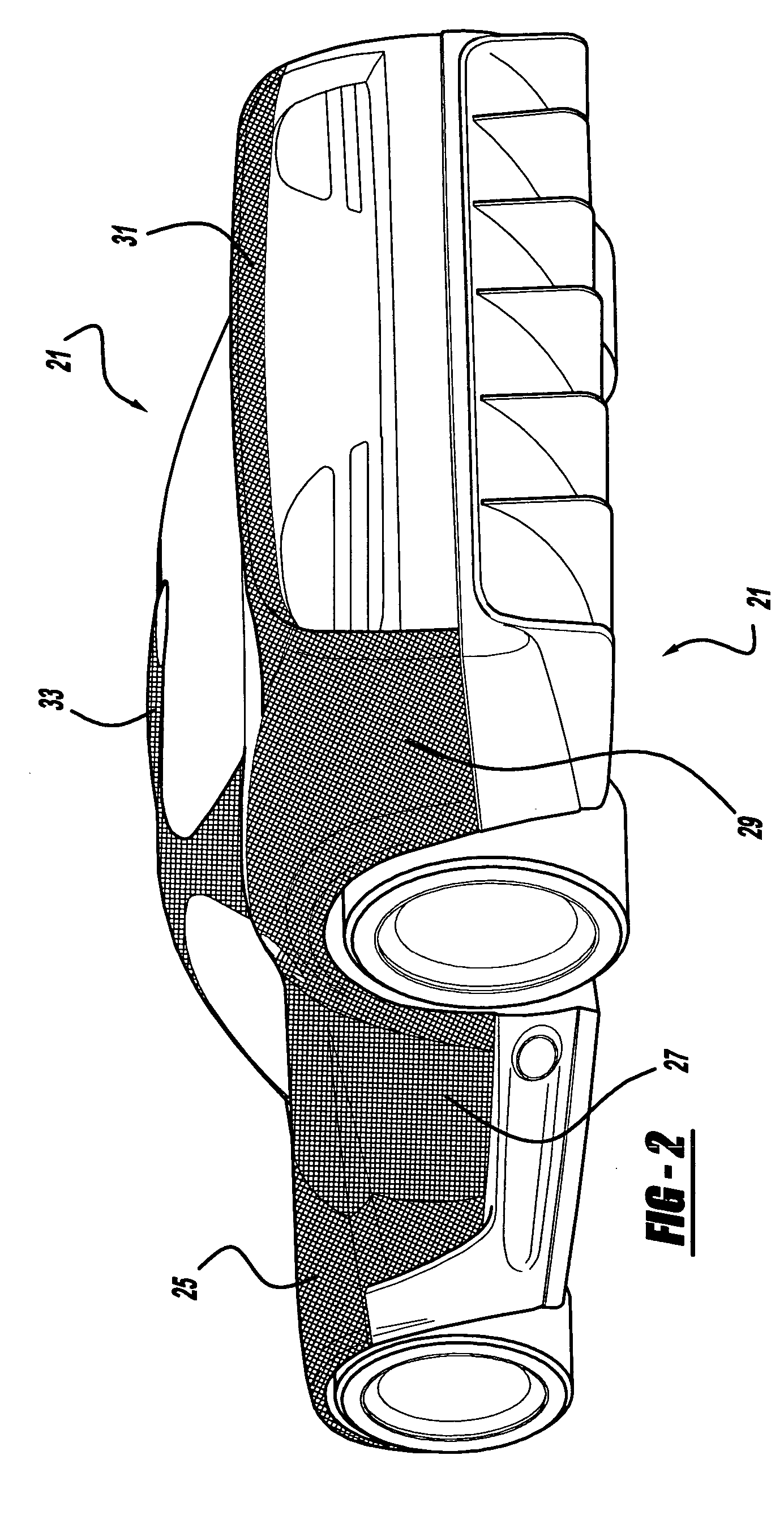Hybrid composite product and system
a composite product and hybrid technology, applied in the field of hybrid composite products and systems, can solve the problems of inability to meet the needs of the experimental panel, the experimental panel is usually limited to very low volume part production, and the outside surface distortion and imperfections are unacceptable, etc., to achieve high volume, high quality, and low cost
- Summary
- Abstract
- Description
- Claims
- Application Information
AI Technical Summary
Benefits of technology
Problems solved by technology
Method used
Image
Examples
Embodiment Construction
[0017] The hybrid composite product and system of the present invention is preferably used to create large body panels in an automotive vehicle 21. Referring to FIGS. 1-4, exemplary body panels include a three-dimensionally contoured hood outer panel 23, a hood inner panel, front fenders 25, door outer panels 27, door inner panels, rear fenders 29, deck lid inner and outer panels, spoilers 31, a roof 33, and alternately, interior trim panels, smaller fuel filler doors, and exterior and interior garnish moldings. Hood 23 has outer surfaces 41 and 43 defined by multiple internal sheet layers 45 which are permanently affixed to each other during processing, and terminate at their peripheral edges 47. Peripheral edges 47 may be downwardly turned as shown, cut along generally vertical planes or provided with a partial radius by pinching then trimming. Outside surface 41 of composite hood product or part 23 is a class A exterior surface which must exhibit extremely high finish quality cha...
PUM
| Property | Measurement | Unit |
|---|---|---|
| time | aaaaa | aaaaa |
| surface area | aaaaa | aaaaa |
| thickness | aaaaa | aaaaa |
Abstract
Description
Claims
Application Information
 Login to View More
Login to View More - R&D
- Intellectual Property
- Life Sciences
- Materials
- Tech Scout
- Unparalleled Data Quality
- Higher Quality Content
- 60% Fewer Hallucinations
Browse by: Latest US Patents, China's latest patents, Technical Efficacy Thesaurus, Application Domain, Technology Topic, Popular Technical Reports.
© 2025 PatSnap. All rights reserved.Legal|Privacy policy|Modern Slavery Act Transparency Statement|Sitemap|About US| Contact US: help@patsnap.com



